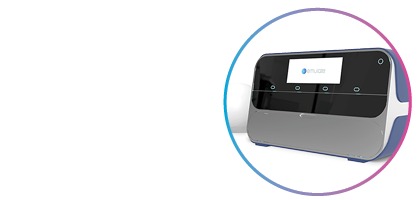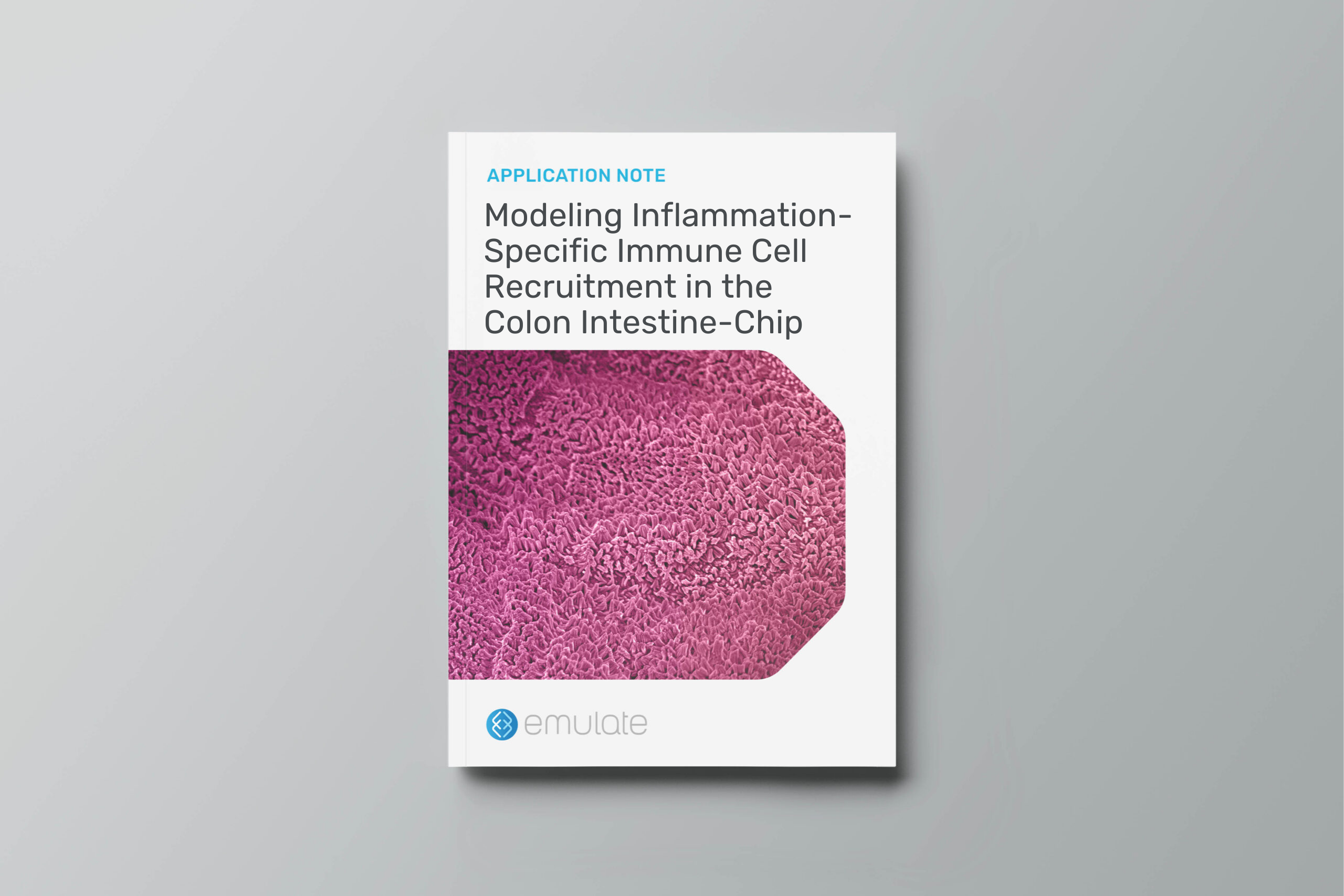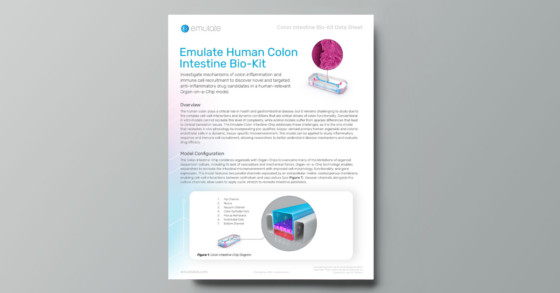organ-Chip model
Colon
Intestine-Chip
Investigate mechanisms of colon inflammation and immune cell recruitment to discover novel and targeted anti-inflammatory drug candidates in a human-relevant, Organ-Chip model.


The Colon Intestine-Chip is a BioKit Model that Emulate has internally developed and validated. It is available as a BioKit, which includes pre-qualified cells, Organ-Chip consumables, and validated protocols, with guarantees on characterization and functionality.
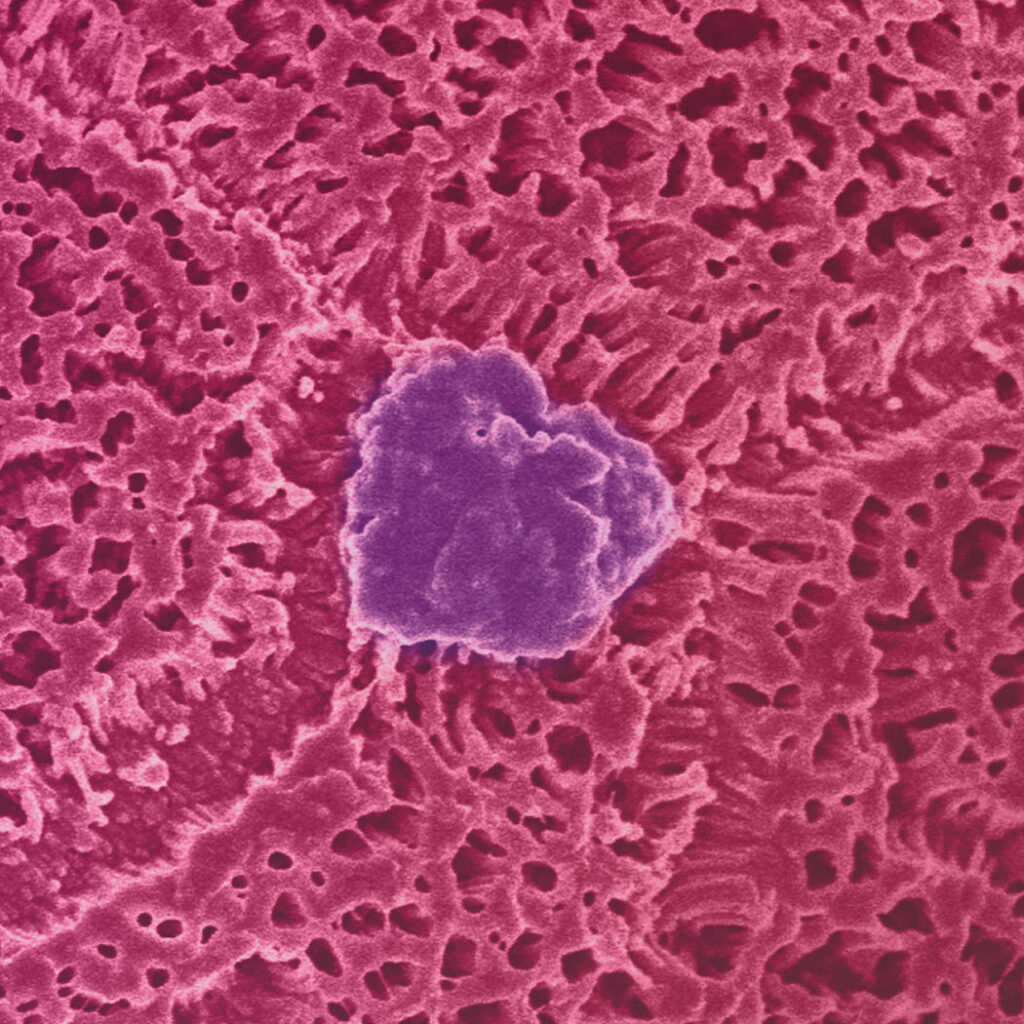
Characterization
A comprehensive colonic barrier model
Mechanical forces on the Colon Intestine-Chip provide a more in vivo-relevant environment. Under dynamic conditions, cells differentiate into characteristic populations and structures, creating the intestinal barrier and forming microvilli. This is in contrast with conventional cell culture with limited and largely undifferentiated cell populations and a lack of physical stimuli.
.
Human-based advanced cell model
Through the combination of biopsy-derived colonoids and colonic endothelial cells, the Colon Intestine-Chip supports more human-like responses, overcoming species differences in animal models that impede human translation.
In vivo-like transcriptome profile
The transcriptome profile of the Colon Intestine-Chip better resembles human colon tissue compared to organoids, with significant enrichment of gene pathways for epithelial cell differentiation, metabolism, and ion transportation.
Physiologically relevant morphology
Mechanical forces of the Colon Intestine-Chip produce increased epithelial polarization and differentiation similar to adult human colon tissue, unlike organoids alone which lack key characteristics of a mature phenotype.
Contains diverse range of epithelial cells
Cellular heterogeneity representative of in vivo physiology is captured with the Colon Intestine-Chip due to the organoid cell source, with improved differentiation and maturation in the chip compared to organoids in suspension.
Relevant barrier function
The Colon Intestine-Chip has a functional barrier with well-defined tight junctions and low permeability. Traditional in vitro models lack relevant barrier function needed for studies beyond routine drug absorption.
Application: IMMUNE CELL RECRUITMENT
IBD research is limited by the inability of conventional models to model complex human immune response.
Inflammatory bowel disease (IBD) is driven by the dysregulation of immune cell recruitment, which results in a runaway inflammatory cascade and damaging downstream effects. This complex immune response is difficult to model in conventional in vitro models because of their limited complexity, and animal models, meanwhile, have been shown to be poor predictors of human immune response due to species differences. The Colon Intestine-Chip addresses these challenges by offering an unparalleled window into the complex mechanisms of human immune response in IBD.
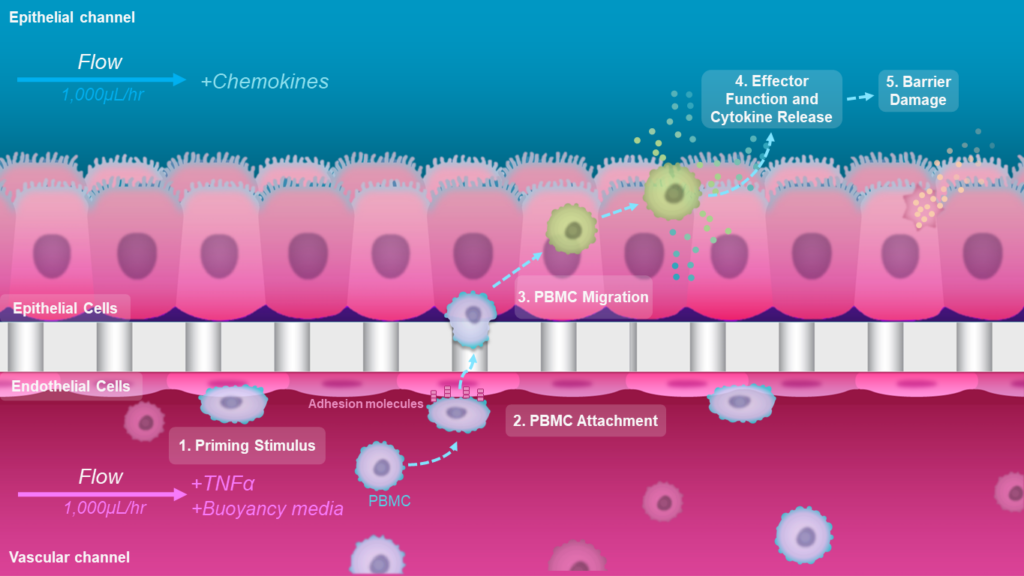
Benefits
Gain an unparalleled window into IBD with the only colon- and inflammation-specific model of human immune cell recruitment
By administering peripheral blood mononuclear cells (PBMCs) in the vascular channel in the presence of a pro-inflammatory priming stimulus, researchers can create a highly holistic, human- and colon-specific recapitulation of immune cell recruitment and downstream response. This includes immune cell adhesion to the endothelium and migration into the tissue, activation of complex interstitial immune signaling networks, and finally a release of the critical hallmark cytokines and disruption of the epithelial barrier, all in a single, human-relevant model.
.
Evaluate the efficacy of immune cell targeted anti-inflammatory drugs
The Emulate Colon Intestine-Chip can be applied to study the efficacy and mechanism of action of drug candidates targeting the recruitment of PBMCs from vasculature to the gut luminal tissue. Emulate has tested multiple clinically relevant compounds with different mechanisms of action and shown how they can block PBMC recruitment, reduce downstream effector function, and prevent PBMC-induced barrier damage.
.
Application: CYTOKINE-MEDIATED inflammation
Investigate mechanisms of inflammation and evaluate efficacy of anti-inflammatory drug candidates
The complexity of the intestinal niche and poorly understood inflammatory mechanisms make developing novel therapeutics for diseases related to colon inflammation a challenge. Current models such as Caco-2 Transwells do not express some of the key inflammatory cytokines associated with diseases like inflammatory bowel disease. There is a lack of available treatments that are safe, effective, and produce durable responses, presenting a need for improved preclinical models for better clinical translation. The Colon Intestine-Chip can help address this need by enabling mechanistic studies of cytokine-mediated barrier disruption.

Benefits
Recreate key mechanisms of colon barrier disruption
By administering proinflammatory cytokines, colonic barrier inflammation can be modeled in a concentration-, time-, and donor-dependent manner, with measurable outcomes including, proinflammatory cytokine secretion, enrichment of inflammatory gene pathways, barrier disruption, and apoptosis.
.
Assess the efficacy of anti-inflammatory drugs
The Emulate Colon Intestine-Chip can be applied to study the efficacy of anti-inflammatory drug candidates to prevent or treat cytokine-mediated inflammation and barrier disruption. Prophylactic treatment with a marketed anti-inflammatory has been shown to inhibit the inflammatory phenotype, reducing the release of proinflammatory cytokines and blocking or delaying barrier damage.
.
Compatible with Zoë-CM2® Culture Module
The Zoë-CM2 Culture Module is a versatile system for model development & target validation. Capable of culturing up to 12 Organ-Chips at a time, the user-friendly platform gives researchers a window into the inner workings of human biology.
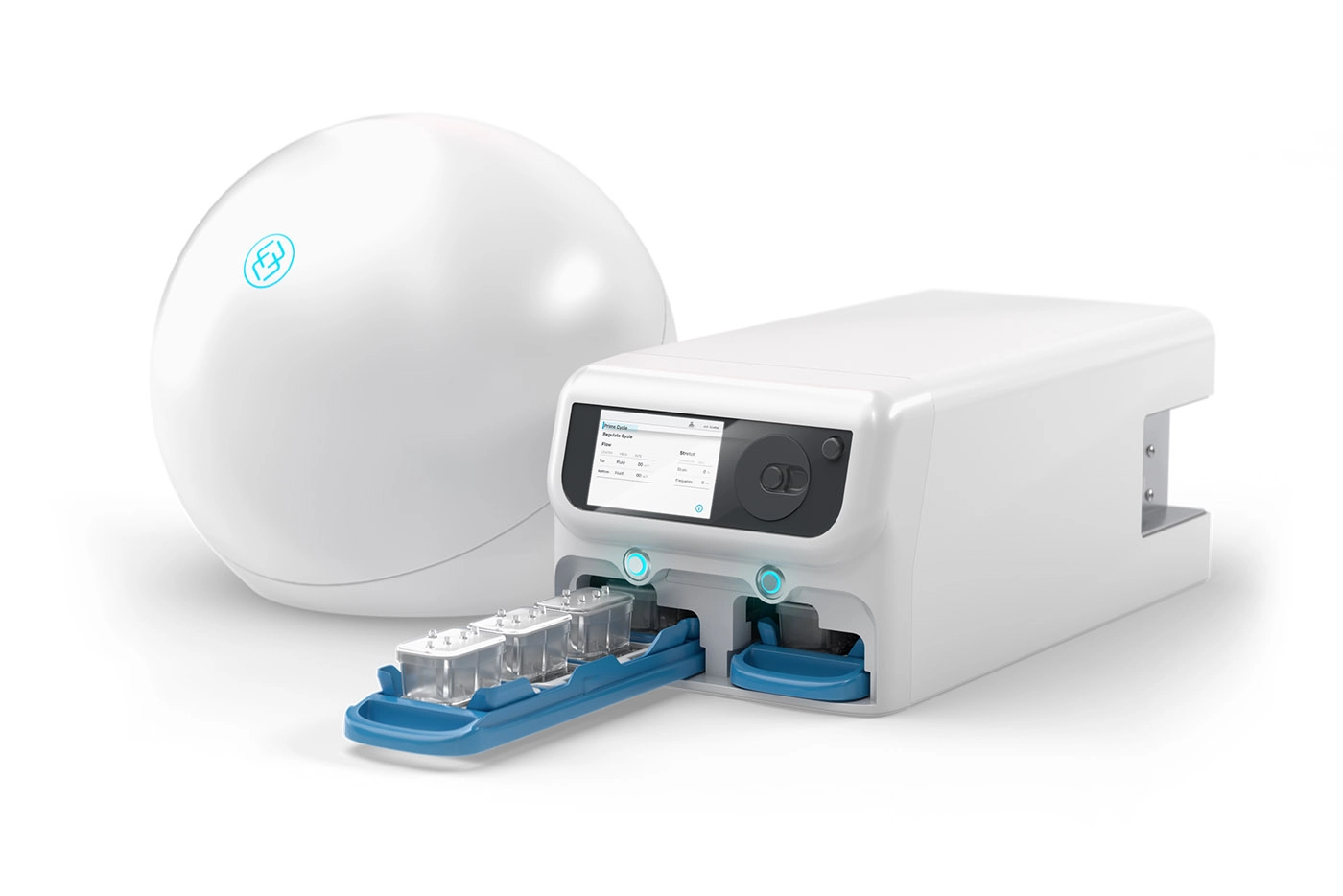
Get Started Today
Experience the predictive power of Organ-on-a-Chip technology. The Colon Intestine-Chip can be created with either a BioKit or a Basic Research Kit.
FEATURED RESOURCE
Related Resources
Speak to an Expert
